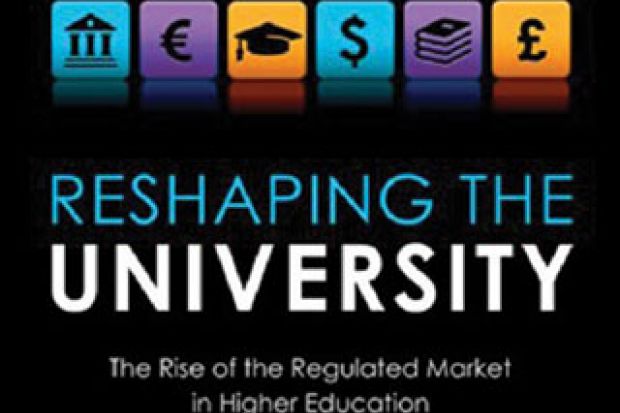Literature that decries the commercialisation of higher education and the transformation of students into consumers abounds. As late entrants to this market, David Palfreyman and Ted Tapper have gained time for reflection, but their challenge is to find something distinctive that has not already been said. They are at least partly successful.
Commendably, the authors bring honesty to current debates, and their opening gambit is that “higher education” is a misnomer for today’s mix of institutions serving a range of student abilities with “widely contrasting motivations for furthering their study”. They are unafraid to pose difficult questions: if undergraduate education “cannot possibly cost £9,000 to provide, given the actual quantum of teaching”, where is the rest of the money going?
It is an approach that will win the authors few friends. They are critical of what they call “elitist Rip Van Winkle dons”, who “have seemingly woken up and discovered just how far standards have slipped as massification has occurred within the HE system and so much of HE has been reduced to vocational training”. Other commentators are labelled naive “golden-agers”, who fail to accept financial realities. Meanwhile, university managers are criticised for their “inability to address issues of incompetent and underperforming academic staff”.
In offering a detailed history of higher education and an analysis of the changing relationship between the state and universities, the authors consider the balance between institutional autonomy and state funding, from the inception of the University Grants Committee in 1919 through the generous government settlements in the post-war boom years, to the more recent rise of the “regulated market”. Along the way, they show that there is little new about universities operating on market principles and that higher education has long played a vocational role in preparing people for work.
Unfortunately, this analysis takes place largely without reference to broader social, cultural and political changes. This results in a presentation of historical continuities at the expense of highlighting what is new in the attitudes and expectations of today’s students and academics. It also leads to a limited analysis of the nature of the state.
The authors acknowledge that state funding has always come with strings attached and that governments of different political hues have “come to the conclusion that higher education should be more closely concerned with meeting national economic and social needs as they themselves defined them”. Despite being clear throughout that “there is no turning back to an essentially publicly funded” model of higher education, Palfreyman and Tapper cannot get away from the notion of the state as regulator responsible for solving the problems they identify as besetting the contemporary higher education sector.
This leads to troublesome conclusions. The authors want government intervention to ensure that teaching takes greater prominence, and they call for beefed-up quality assurance procedures and for the introduction of national inspection and testing regimes similar to those now operating in schools. They argue that a new and competitive market in undergraduate provision could be “the decisive factor in improving the quantum and quality of teaching”.
Despite their appetite for levelling charges of naivety at others, Palfreyman and Tapper seem unaware of some of the consequences of their proposals. Few teachers credit school inspections with raising educational standards; instead, the process enshrines game-playing and encourages teaching to the test. This is the last thing league-table-conscious universities need. Similarly, there is little to suggest that students are the best judges of teaching quality.
In many ways, Reshaping the University is a brave book: its only problem is not going far enough. The logical question it raises, but never sufficiently answers, is why universities should accept state regulation when government money is no longer forthcoming.
Reshaping the University: The Rise of the Regulated Market in Higher Education
By David Palfreyman and Ted Tapper
Oxford University Press, 336pp, £55.00
ISBN 9780199659821
Published 12 June 2014





